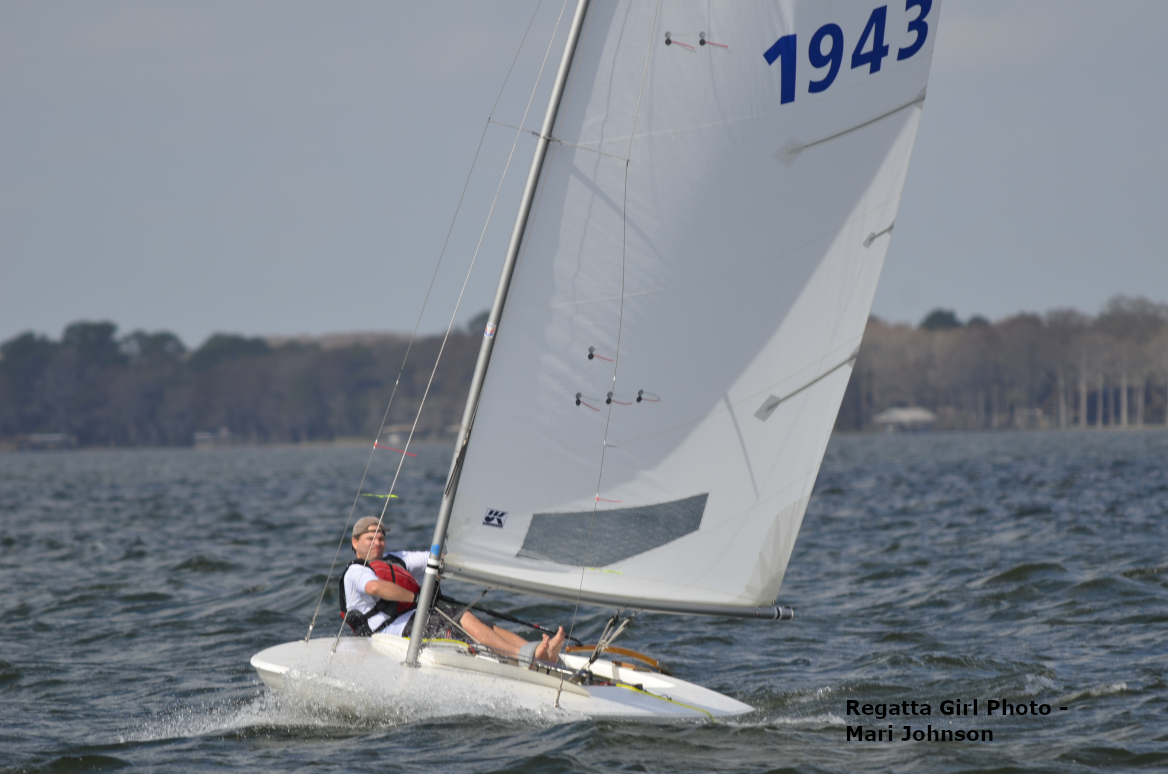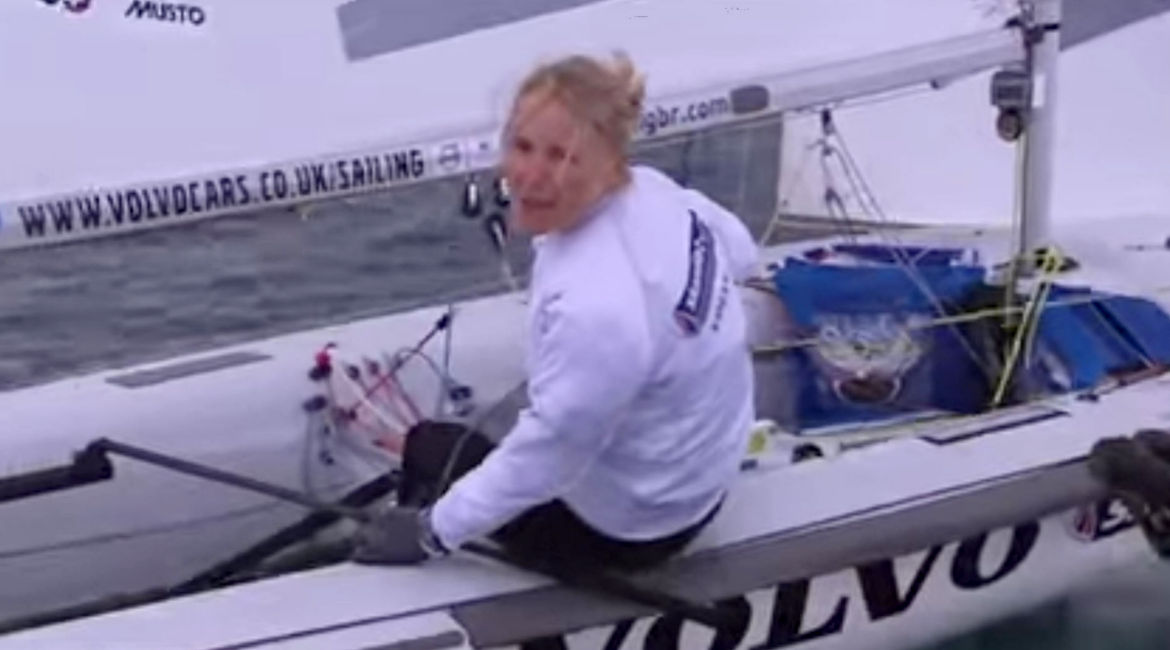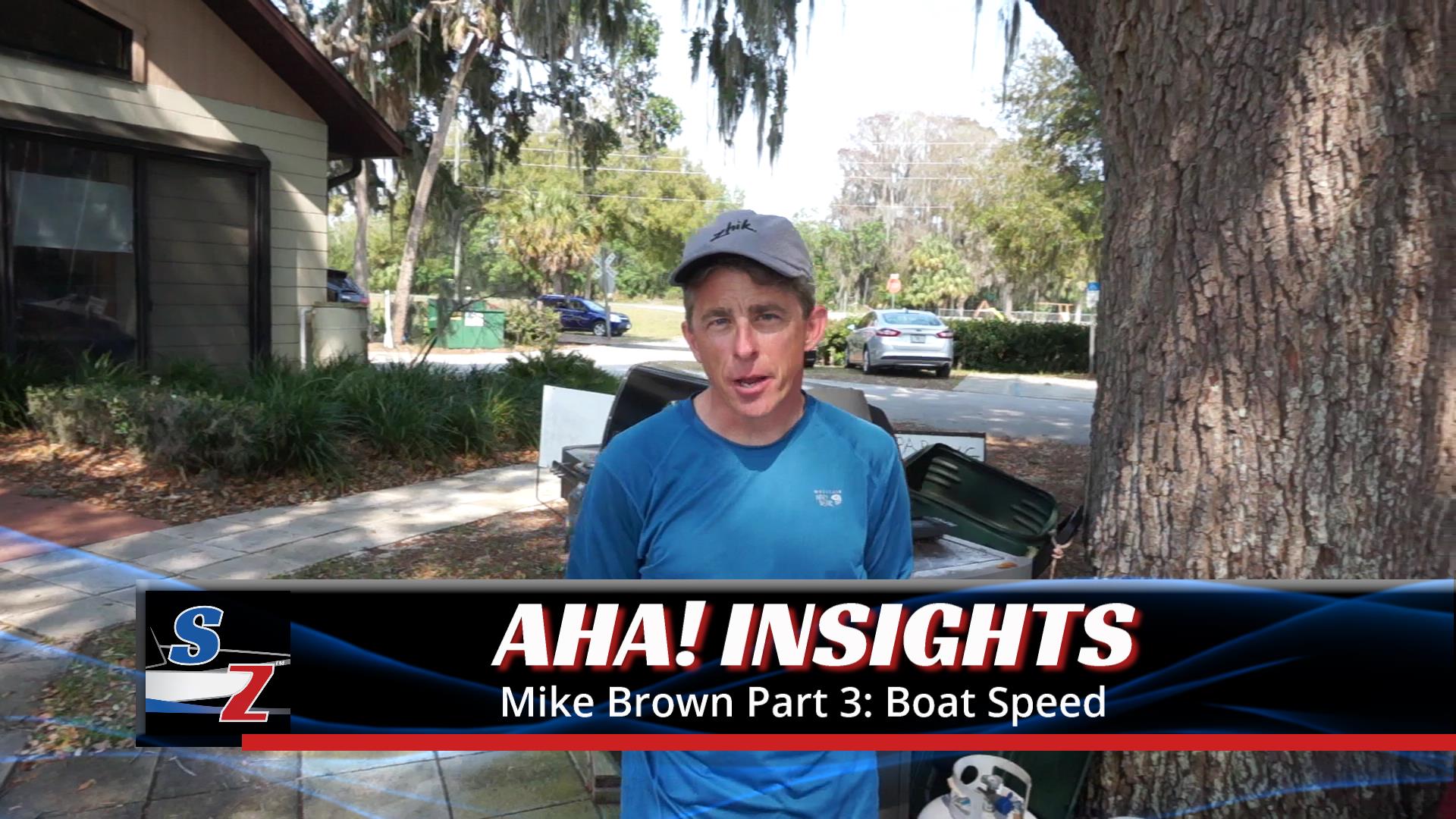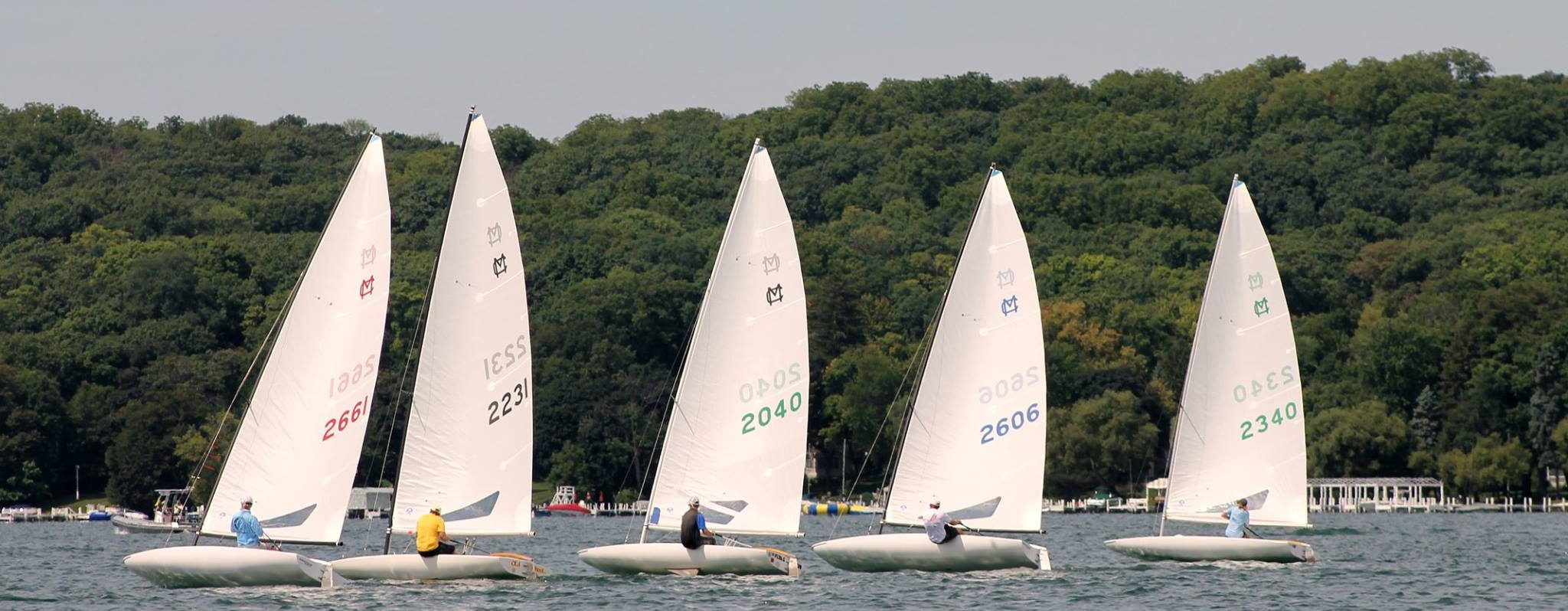The skipper winning the most races inevitably is going to be the one with the best touch. I call touch the simultaneous coordination of steering and sail trim with wind and sea conditions.
Sailing upwind is really a never-ending series of accelerations; the shifting to higher speeds and higher pointing angles and then a slowing down again as the wind comes and goes.
Bruce Goldsmith in Sail Trim and Speed – Rebel Rabble, February 1981
We’ve posted articles about sail trim, puffs/lulls, and changing gears. However, the Bruce Goldsmith article in Rebel Rabble convinced us there’s more. Bruce puts everything together using the concept of touch: the ability to transition between modes based on your boat speed, the wind, and sea condition.
The article is great, but it took us a while to understand some of it. So, we decided to summarize in some detail, blending Goldsmith’s words with our own interpretation. Articles mentioned below from Vaughan Harrison and Willie McBride helped. We also consulted Bill Draheim for advice.
Background – Sail Trim and Gears
Goldsmith talks about alternating between two upwind sail trim settings or gears.
- Pointing – flat sails, flat entry, maximum draft aft.
- Accelerating – full sails, slightly rounder entry, maximum draft forward.
For more, see our series on Upwind Sail Trim.
Touch in Puffy Air
In puffy air you make lots of transitions between acceleration and pointing. The sailors with the best touch make these transitions with gentle sheeting changes and gentle steering – all done just an instant before the puff hits.
In a puff, you hike and ease the sails for acceleration gear. If done properly, you squirt forward. Then you flatten the sails and head up. The timing of these transitions is critical.
- Ease too soon and you’ll lose height (i.e., distance to windward).
- Ease too late, you’ll waste the first part of the puff. You’ll also likely stall the sail and slip to leeward. Willie McBride talks about stalling in Boat Handling First Principles, from the Skiff Squad.
- Flatten the sails and head up too soon, you’ll be sailing too high without achieving top speed. You lack power to accelerate further, and your foils are not providing enough lift. This generates excess leeway.
- If, after achieving top speed, you delay flattening and heading up, you’ve lost an opportunity to take height.
In a lull, you get weight in, hold sail trim, and steer straight (Goldsmith says you can even steer slightly higher). If done properly you coast forward in a pointing mode, bleeding speed. Then you get ready to power back up as the wind allows. If the lull persists, you will have to head off a touch, preferably by flattening the boat slightly, but using your rudder if necessary.
Touch and Traps in Steadier Winds
In steadier winds you can find a groove based on wind velocity and sea state. Once you’re up to speed, you’re trying to maintain perfect heel angle, a very slight weather helm, and sails as flat as the conditions allow. Small changes won’t affect the groove much.
Sailors with good touch avoid the traps inherent in this flat sail condition. Here are the traps to avoid.
Trap #1. Slow Reaction to Pinching
From Goldsmith: “When you are sailing in high point conditions namely, steady medium force air of 5 to 15 mph with no waves, the groove will be very close to a point at which the sails are set too flat…. Many times, the sail will be so flat forward that you can be too high on the wind and pinching, and it still won’t luff.”
In this condition, steering becomes the critical factor. Be ready to bear off slightly before the boat slows. By the time you feel the boat slowing, it’s too late, because your flat sails won’t let you accelerate. If you bear off without easing, you’ll be over-trimmed and slow, stalling your foils. Vaughan Harrison describes this in The Drawbacks of Pinching in Upwind Speed. Airplane pilots might say you are behind the power curve.
Trap #2. Heavy Air – With and Without Waves
In heavy air, the acceleration phase is shorter. Get to the flat sail condition more quickly. If not, you’ll have lots of helm and the boat will feel bound up.
However, in waves, the flat sail condition is not desirable. Ease and drive off to compensate for the slowing effect of the waves. Goldsmith notes that heavy air and waves can play havoc with your touch. You’ll find that you tend to under-react. Vaughan Harrison says to be more aggressive with your steering and don’t worry about using too much rudder if it’s necessary to keep you moving.
Trap #3. Light Air
In light winds, the acceleration phase lasts longer, and you may not be able to flatten the sail as much after accelerating.
Trap #4. Leeward Helm
If the sails are too flat, they lack the power to generate a slight windward helm. Goldsmith says the feeling is one of constant blah. If the wind decreases or your boat becomes under-heeled, you might even get leeward helm. Leeward helm is highly undesirable since it creates both drag and underwater lift to leeward (the wrong direction). To correct this, power up the sails and bear off a touch.
About Bruce Goldsmith
From Wikipedia: Bruce was a sailor from Michigan. He twice won the Worlds in the Lightning class, was many times North American Champion in several classes, as well as gold medalist in the 1967 and 1975 Pan Am Games. He died in 2007 at the age of 71 while racing during a storm on Lake Erie. (The boom hit Bruce in the head.)
Sailors that knew Bruce tell us that he was a legend – a top-notch sailor, unique personality, and great partier. Here’s a link to an article about Bruce. Bill Draheim fondly remembers Bruce as his mentor. Here’s a link to a series of articles Bill wrote for Sailing World following Bruce’s death.
Related Content
Manage Upwind Helm Balance for Speed and Feel – SailZing
Puff Response: Variations on Ease, Hike, Trim – SailZing





